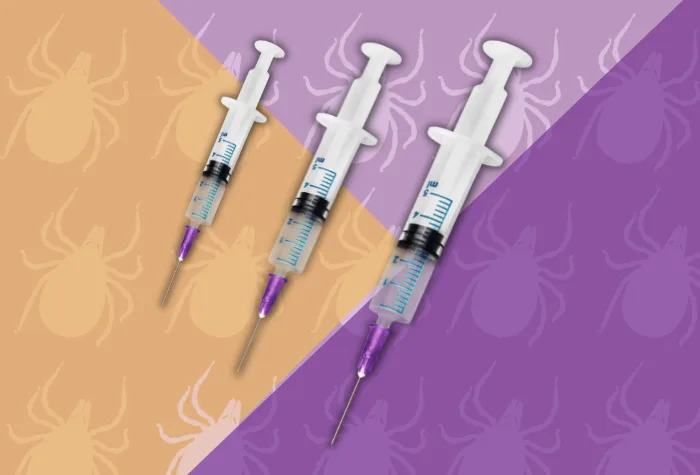
Phase 3 study of Lyme disease vaccine candidate kicks off
If trials are sucessful, a vaccine could be approved as early as 2025.
Pfizer Inc. and Valneva SE have announced the start of the third phase of a clinical study for a Lyme disease vaccine candidate.
“With increasing global rates of Lyme disease, providing a new option for people to help protect themselves from the disease is more important than ever,” Annaliesa Anderson, Ph.D., Senior Vice President and Head of Vaccine Research & Development at Pfizer, said in a statement
“We hope that the data generated from the Phase 3 study will further support the positive evidence for VLA15 to date, and we are looking forward to collaborating with the research sites across the U.S. and Europe on this important trial."
The placebo-controlled study will include about 6,000 participants aged 5 years and older, located in approximately 50 sites where Lyme disease is considered "highly endemic" - including several European countries and parts of the United States.
Phase 2 studies indicate "strong immunogenicity in adults as well as in children, with acceptable safety and tolerability profiles in both study populations," according to Pfizer.
The potential preventative treatment - called VLA15 - is the only Lyme disease vaccine candidate in clinical development, Pfizer says. There is currently no Lyme disease vaccine available for humans.
If trials are a success, VLA15 could be approved as early as 2025.
VIDEO: A single tick can spread up to 17 different infections
Ticks and Lyme disease in Canada
Not all ticks carry the bacteria that causes Lyme disease.
Only black-legged ticks can transmit bacteria that cause the condition and only if they are infected with it, according to the Government of Canada.
Early detection is one of the best ways to treat Lyme disease.
Experts say the condition is on the rise in Canada and the U.S. due to a combination of ticks expanding northward and warmer weather, which is allowing the arachnids to survive in climates that were previously too cold.
It can take three days to one month for symptoms of Lyme disease to present. Lyme disease is treatable with antibiotics.
Lessen your risk
When heading outside, experts say you can lessen the risk of contracting Lyme disease by:
Using insect repellent that contains DEET or Icaridin.
Avoiding long grass and bushes.
Covering up in an area known to have ticks.
Wearing light-coloured clothing.
Checking yourself, your children, and your pets after time spent outdoors. D a full-body check -- especially in the hair, under the arms, in and around the ears, the belly button, behind the knees, and between the legs.
Showering or bathing within two hours of being outdoors so you can check for ticks and remove unattached ticks.
If you find a tick...
Use tweezers to immediately remove it by grabbing onto its head and pulling it straight out.
Wash the bite with soap and water or an alcohol-based sanitizer. If you don’t feel well, contact your health care provider and report the tick bite.
Keep the tick in a closed container and bring it to your healthcare provider.
Put dry outdoor clothes in a dryer on high heat for 60 minutes to kill any remaining ticks.
Click here to learn more about Lyme disease in Canada.
Tips courtesy of the Eastern Ontario Health Unit.
Thumbnail: Custom by Cheryl Santa Maria, made using graphical elements from Canva Pro.










